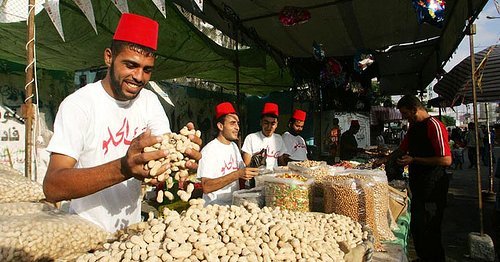Regionalisation and security in the post-Cold War period
The phenomenon of regionalization needs to be analysed not only in terms of the economic processes underway, but also in terms of its implications for possibilities to increase the role of regional arrangements in the maintenance of security and the prevention of conflicts in the post-Cold War world. A novel system of international relations is gradually emerging, providing better conditions for prevention of both inter-and intra-State violent conflicts and for partnership relations. Yet working with regions means working with elusive entities and undefined boundaries.
Regionalization can also be used to mean a trans-frontier area, an area which has common characteristics of an ethnic, cultural, or geographic nature calling for cooperation on both sides of a State frontier, but which does not necessarily involve other parts of each State. Such effective trans-border structures have to be embedded in the local institutions and correspond to a certain commitment of the people on both sides.
Trans-frontier regions: lessons from De Rougement and Marc
The concept of trans-frontier regions bringing together sections of existing States but not the whole State owes much to two thinkers of the European federalist tradition: Denis De Rougemont and Alexandre Marc. Both had been influenced by Proudhon who made a distinction between State and Society. For both men, transcending top-down, State-driven notions of regionalization is particularly important in order to understand the spontaneous processes of regionalization, the making of regional civil society as well as cross-frontier regions.
Thus, it is necessary to analyse all the significant actors in the process, in particular what has been called ‘regionalization from below’ — the spectrum of influences stemming from regional migrant workers, tourism, student exchanges, mass culture as well as a sense of regional belonging.
Both De Rougemont and Marc were also influenced by the area in which they worked: De Rougemont in Geneva and Marc in Nice. De Rougemont worked for the creation of a Leman region that would group the Val d’Aoste – an autonomous region of Italy, Haute Savoie - a French department, and the Swiss cantons of Geneva and Vaud. All these areas are peripheral to the economic centers of power of Italy, France and Switzerland, although the federalist nature of the Swiss confederation makes Geneva and Vaud less easy to forget than the Val d’Aoste in Rome. De Rougemont also had in mind the quiet cooperation of the Regio Basiliensis which brought together parts of France, Germany and Switzerland around the economic powerhouse of the city of Bale.
Nice, likewise, is a late addition to France and culturally owes much to its proximity to the State of Monoco as well as its ties to northern Italy and thus to the states of Savoie of which it was once a part. Thus, for both De Rougemont and Marc, the idea of a region made of a section of different States was a reality of the place where they lived and not an abstract theory. Since I had worked with both De Rougemont and Alexandre Marc, the idea of a Gaza Development Authority grouping Gaza, elements of Israeli society, marginal area of Egypt and open to the Mediterranean world owes much to them.
Trans-frontier regions and peace in the Middle East
Only the accidents of history make Gaza a starting point for an innovative trans-State region in the Middle East. There are less difficult and more prosperous areas that might serve as a model. A Jordan Valley Authority, also based on the Tennessee Valley Authority (TVA) had been proposed in the late 1940s after the creation of the State of Israel. The Jordan Valley is relatively prosperous, issues of water use are important and require cooperation, and relations between Jordan and Israel have been less hostile and ideologically-driven than between Israel and other Arab States.
Until the control of the Gaza strip by Hamas, economic and political planning concerned the modalities of linking the Gaza strip with the West Bank once the State of Palestine was created. Both legal and transportation difficulties were raised, but a variety of suggestions have been made. These may still come into being. The divisions due to political options between the West Bank and Gaza need not be permanent, and compromises between Hamas and Fatah may yet be reached. However, the idea that Gaza could be an enduring separate entity is growing.
A new approach: the creation of a Gaza Development Authority
Bold steps are quickly necessary in order to maintain and solidify the truce between Israel and Hamas concerning Gaza. The role of Egypt is crucial concerning the creation of a Gaza Development Authority. The adjacent Egyptian area — the Sinai — is largely peripheral to Egyptian economic and State politics. Egypt as ‘the gift of the Nile’ has been largely indifferent to the Sinai as far as economic development is concerned.
Now, politics and economics require a new approach. As the French economic planner Louis Armand wrote in his Annexe to J.J. Servan-Schreiber’s Défi américain (Paris, 1967) “Let us develop in common what is new. Let us leave by the side of the road those elements of the past whose unification would take too much time, require too much energy and raise too much opposition.”
It is possible to envisage a Palestinian State made of Gaza and the West Bank
It is possible to envisage a Palestinian State made of Gaza and the West Bank. It is also possible to envisage a single Israel-Palestinian State grouping Gaza, Israel and the West Bank. But, as Armand notes, such unifications will take time and energy and raise opposition. Thus the need for developing what is new and whose economic aspect may have important peacebuilding consequences.
Such a new structure would be a trans-frontier Gaza Development Authority. It must be seen as a socio-economic project but with no specific outcomes. Much will be dependent on what popular legitimacy such a project is able to attract.
If such a Gaza Development Authority is to become a mechanism for both peace and development, the Authority must go beyond elites, mobilizing broader support and a wide range of actors


Follow the comments: |
|
